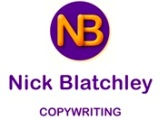Copyright is everywhere. We all know what it is – more or less – but exact details are harder to pin down, especially since the internet has thrown up extra challenges and uncertainties. In essence, it says that the creator of any work (words, music, images, filmed material or buildings, among many others) should have the sole right to profit from their creation, unless they specifically assign rights to someone else. It seems an obvious enough idea, but copyright is historically quite recent.
Even before the invention of printing in the west* made mass production of books possible, the concept of intellectual ownership occasionally arose. In a case in 6th century Ireland over a book copied without its owner’s consent, the ruling was given that “To every cow belongs her calf, therefore to every book belongs its copy.”
In general, though, cultures tended to regard knowledge and art as belonging to the whole population. Authors and artists were often employed by patrons who would pay them a regular salary, and they didn’t need to live off any income their past work might garner.
This changed when the introduction of the printing press made it possible to distribute relatively cheap copies widely. Governments made desultory attempts to regulate this, notably the Venetian system of licencing books and the formation of the Stationers’ Company in England during the 16th century. Essentially a printers’ guild, it had the right to insist on all books being registered with them.
This was mainly for the purpose of regulating printing, but it did have the side-effect of allowing authors, or other interested parties, to establish their credentials of ownership. Many early editions of Shakespeare’s plays, published during his lifetime, were pre-emptive measures to stop anyone else legally publishing an edition or putting on pirate productions.
Nevertheless, this only had limited legal status, and enforcement was largely limited to “sending the boys round”. It was in 1710, during Queen Anne’s reign, that Parliament passed the world’s first Copyright Act. This established the principle that a work was protected for a fixed period after publication, although the period initially was only fourteen years.
It also established the concept of public domain, whereby works whose copyright has expired couldn’t be restrictively owned by a printer or bookseller, as was previously the case. This didn’t settle matters, and repeated legal cases through the 18th century gradually established how copyright actually worked.
Copyright has spread throughout the world since 1710, and it’s changed continually. The Berne Convention of 1886 established the international principle that copyright must be at least the author’s lifetime plus fifty years. It took a long time before all major nations enacted the Berne Convention (1989 in the case of the U.S.) and the minimum period is often longer – the author’s lifetime plus seventy years in both the U.K. and the U.S.
And, of course, the controversies continue, with issues like music streaming and epublishing muddying the waters. Then again, Queen Anne’s government could hardly have foreseen the issues the internet has thrown up.
* China had printing from engraved plates centuries long before Europe, but this wasn’t nearly as versatile as movable print. Contrary to popular belief, the Chinese had developed movable print, but the huge number of characters in Chinese writing made its use impractical.
